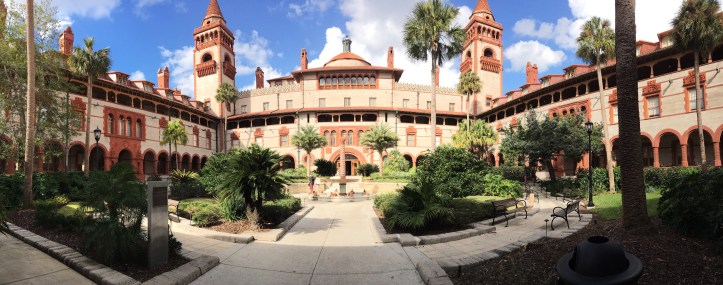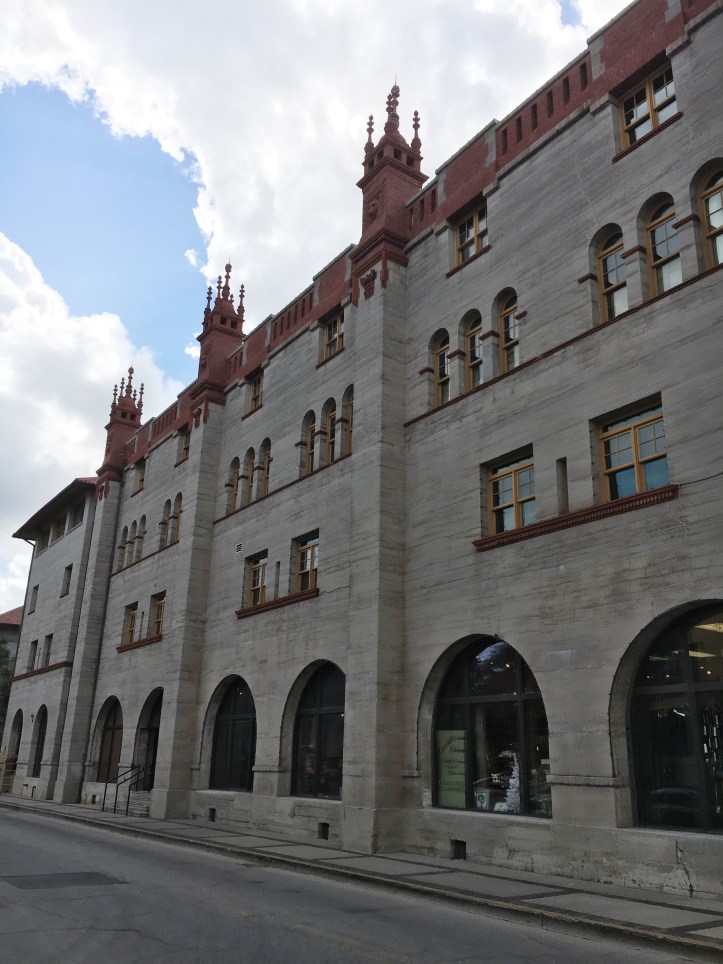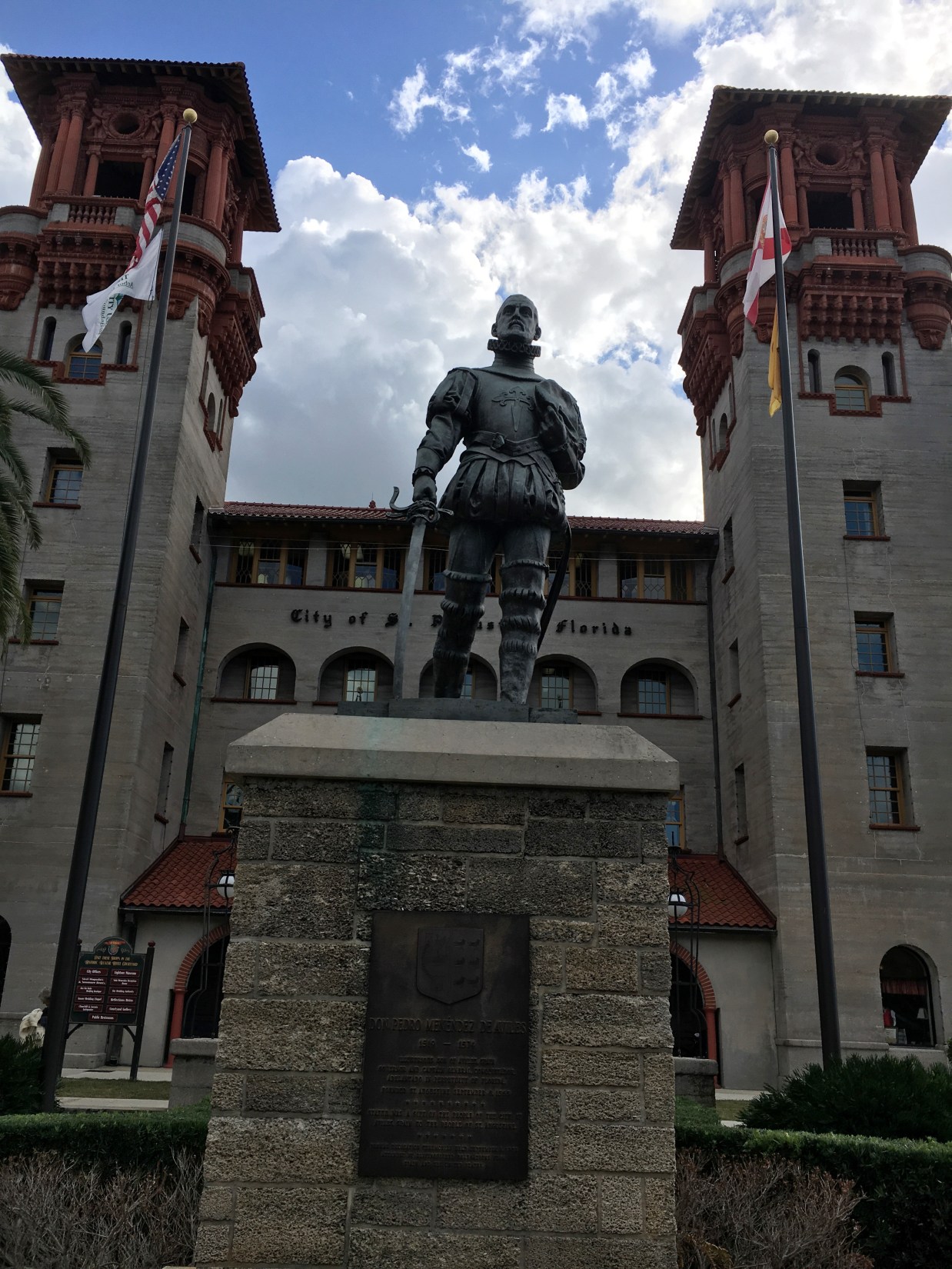We had a pretty long day today and I am so relieved to be in bed right now! The ride went pretty smoothly, aside from it taking like an hour and a half to get Bentley (my cat) in her carrier. But luckily, she slept most the time and didn’t cry at all. Thank God because that would have just broken my heart.

We drove about 4 hours before making our first stop at Blue Springs State Park. During the summer/spring months, the springs are open for swimming and inter-tubing but during the winter months, aka now, it becomes a refuge to migrating manatees looking for warmer water. It was absolutely beautiful to see these gentle creatures! I’ve been dying to see manatees since we’ve been here and after 8 months I finally had my chance!


After walking around the boardwalk for about 15 min, we were back in the car and headed to Devil’s Den, a 1.5 hr drive away. I stayed in the car with Bentley while Joey went and explored the cavern.
Devil’s Den is a natural underground water spring. Because going down is such a narrow path, only one person at a time is allowed to go down. If anyone out there ever makes it out, I recommend you go early in the morning so that you have the cavern to yourself (as Joey did), allowing you to take your time getting pictures without people snorkeling in the background.

Then it was on the road for another 4 hours to get to Saint Augustine, FL.
Saint Augustine is definitely a town we want to visit again when we have more time. It’s a place you need at least 2 days to really appreciate and get to see it all. But I’ll share with you the things I saw/learned during our short 2 hour visit.

St. Augustine, FL is America’s oldest city. And they take that very seriously. Every building is preserved and has plaques mounted on the sides telling the history of the particular building. It’s amazing. The city streets are still cobblestone!

 The city was founded in 1565 (451 years ago!) by Spanish admiral/ conquistador Pedro Menendez de Aviles, who became Florida’s first governor. He actually named it “San Agustin” to match the names of his ships, which carried settlers, troops, and supplies coming here from Spain. It quickly became the capital of what is called “Spanish Florida,” that is until the territory was exchanged as battles between Spain and Britain began.
The city was founded in 1565 (451 years ago!) by Spanish admiral/ conquistador Pedro Menendez de Aviles, who became Florida’s first governor. He actually named it “San Agustin” to match the names of his ships, which carried settlers, troops, and supplies coming here from Spain. It quickly became the capital of what is called “Spanish Florida,” that is until the territory was exchanged as battles between Spain and Britain began.

In 1819, Spain finally gave up and ceded Florida to the United States.

Some years later, in 1887, billionaire Henry Flager, a winter resident of Florida, fell in love with Saint Augustine during one particular visit. It was then that he decided to begin the construction of two HUGE hotels- the 540 room Ponce de Leon Hotel and Hotel Alcazar; located right across from each other. With their openings, the city became the winter resort for majority of American “high” society. Flager then built his railroad from St. Augustine down to Miami and Miami quickly took over as the winter destination for the wealthy fleeing the colder months elsewhere.

Now what was once the Ponce de Leon hotel is known as Flager College and the Hotel Alcazar serves as a Lightener Museum, holding much of the cities historical artifacts and also serving as the current City Hall.
Most buildings have historical stories associated with them; much of the history being which general lived there during the wars, when it was owned by the Spanish vs the British, etc. What I found really special about St. Augustine was that all of the history is recorded and remembered. You can learn the earliest history of a building, when the Spanish first took over the city. And then on top of that original history, you can read about what happened when it became operated by the British, all the way up to it’s current state, everything has been recorded throughout the years. Pretty crazy, right?
There are also a variety of historical churches, all specific to different people. There’s a church that has been a designated a historical landmark as the first chapel and home to the first colony of Greek people to come to America in 1768. There ‘s a Spanish Catholic mission called Nombre de Dios, also put into place by Pedro Menendez de Aviles when he landed with settlers and the Father from his own parish. Then of course there are tons of forts around the area; Castillo de San Marcos (Spanish) , Fort Matanzas (Spanish), Fort Mose (built by the Spanish to serve as an asylum for runaway slaves, later becoming the first free black settlement in the U.S.) , St. Francis Barracks (British), and the Spanish Military Hospital (now museum).

When you get closer to the water, you cross what is known as the Bridge of Lions, a bridge lined with lion statues that connect St. Augustine to Anastasia Island; where the lighthouse is located. Along the water, you’ll see huge ships, some of which are literally pirate ships (my favorite).

After a pretty long day I am so ready to get some sleep before tomorrow’s Day Three adventures!
Total Drive Time: 11 hours
Next Up: Meridian, Mississippi
Xoxo,
Amanda




Those photos are awesome! I have never been to Florida but it looks fantastic. My son who travels a lot has said that he wouldn’t mind move and settl down there
LikeLiked by 1 person